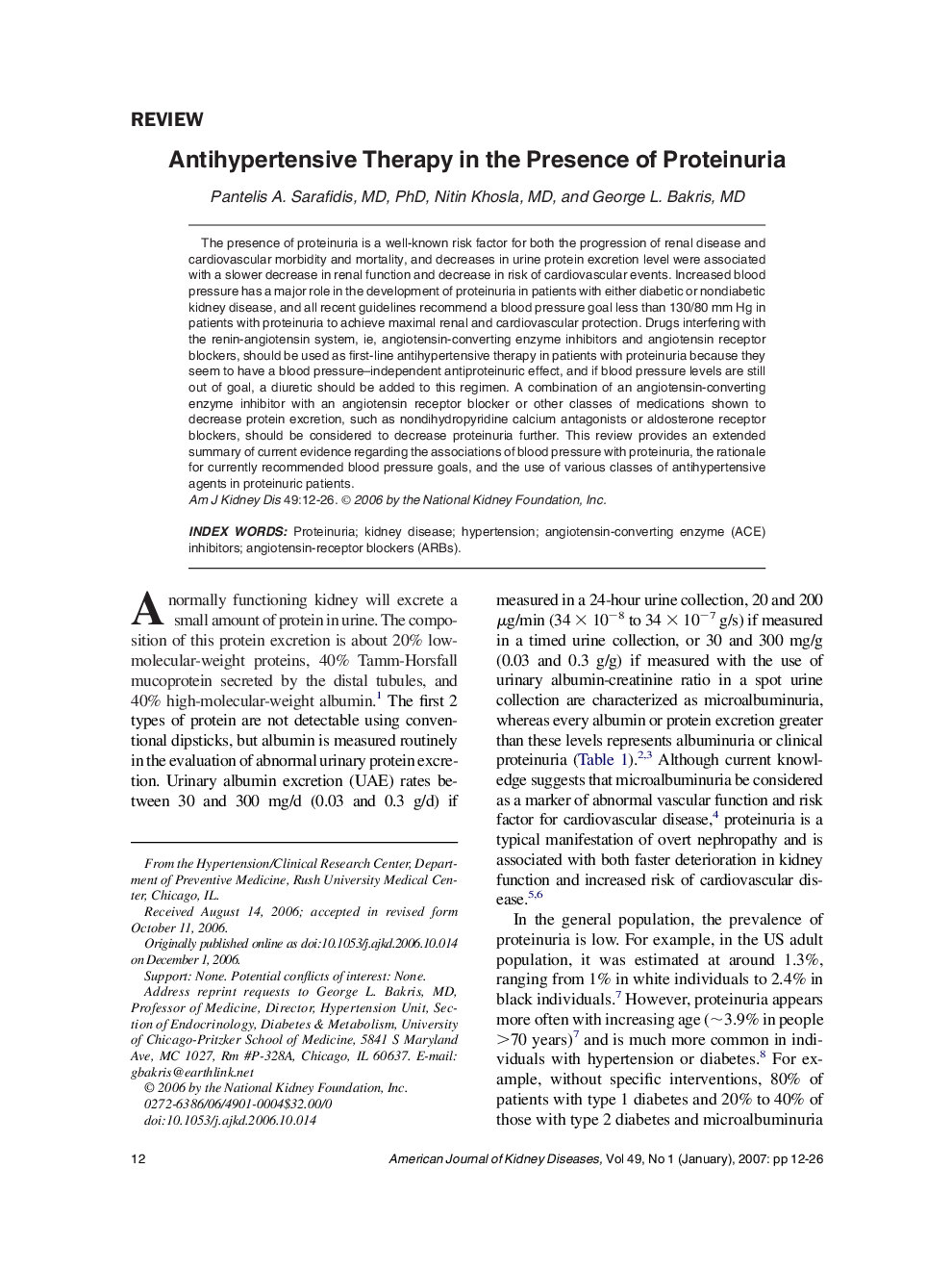| Article ID | Journal | Published Year | Pages | File Type |
|---|---|---|---|---|
| 3851312 | American Journal of Kidney Diseases | 2007 | 15 Pages |
Abstract
The presence of proteinuria is a well-known risk factor for both the progression of renal disease and cardiovascular morbidity and mortality, and decreases in urine protein excretion level were associated with a slower decrease in renal function and decrease in risk of cardiovascular events. Increased blood pressure has a major role in the development of proteinuria in patients with either diabetic or nondiabetic kidney disease, and all recent guidelines recommend a blood pressure goal less than 130/80 mm Hg in patients with proteinuria to achieve maximal renal and cardiovascular protection. Drugs interfering with the renin-angiotensin system, ie, angiotensin-converting enzyme inhibitors and angiotensin receptor blockers, should be used as first-line antihypertensive therapy in patients with proteinuria because they seem to have a blood pressure-independent antiproteinuric effect, and if blood pressure levels are still out of goal, a diuretic should be added to this regimen. A combination of an angiotensin-converting enzyme inhibitor with an angiotensin receptor blocker or other classes of medications shown to decrease protein excretion, such as nondihydropyridine calcium antagonists or aldosterone receptor blockers, should be considered to decrease proteinuria further. This review provides an extended summary of current evidence regarding the associations of blood pressure with proteinuria, the rationale for currently recommended blood pressure goals, and the use of various classes of antihypertensive agents in proteinuric patients.
Related Topics
Health Sciences
Medicine and Dentistry
Nephrology
Authors
Pantelis A. MD, PhD, Nitin MD, George L. MD,
